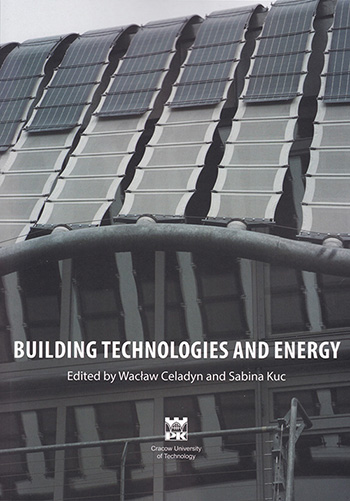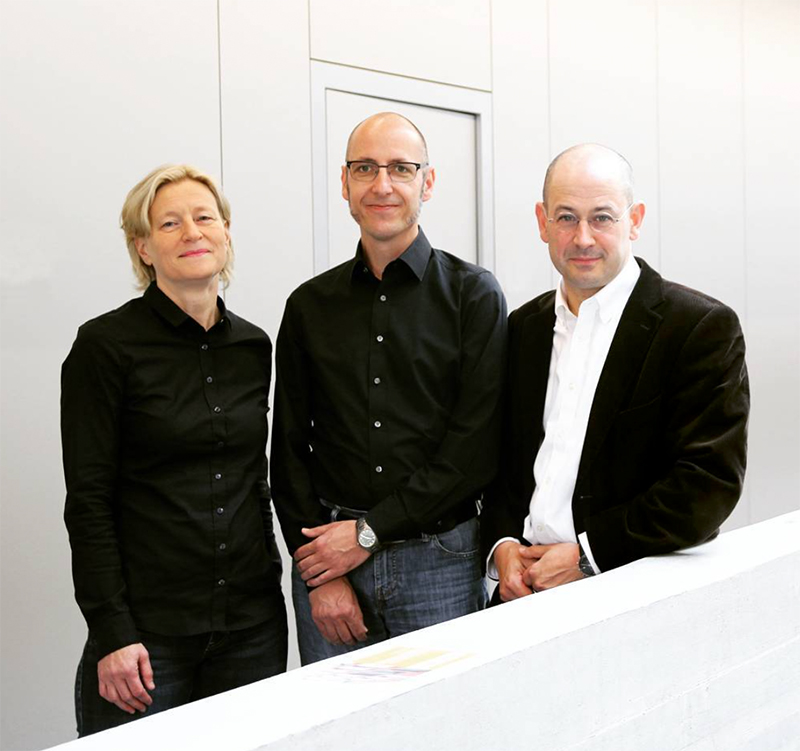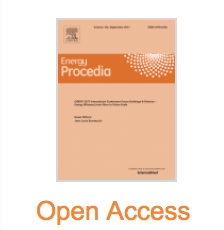Cremers, Jan: ‘The Potential of Building Envelopes to Actively Provide Renewable Energy – a Review and Outlook’, p. 59-70. Chapter in the book ‘Building Technologies and Energy’ (ed. by Waclaw Celadyn and Sabina Kuc), Cracow University of Technology, 2017, ISBN 987-83-7242-956-8
Author: wpjc
presentation @ pro-flex 2017
Jan Cremers will provide the opening presentation at pro-flex-2017 conference at FEP Dresden on Nov 27th 2017: “Innovative application of ETFE films in architecture”
Dean@HFT
Since Sept 1st 2017, Jan Cremers serves as dean of the Department of Architecture and Design @ HFT Stuttgart. The new team also consists of Elke Sohn and Markus Binder as vice deans.
(photo by Sandra Wrage, HFT Stuttgart)
Structural Membranes 2017
Paper and presentation @ Structural Membranes 2017, Munich
Cremers, Jan; Marx, Hannes: Improved Daylight Comfort by a New 3D-Foil That Allows to Trade off Solar Gains and Light Individually. Structural Membranes 2017. VIII International Conference on Textile Composites and Inflatable Structures. IACM / ECCOMAS. Munich, 2017, Oct. 9-11. Proceedings, p. 133-140 (8p., Eds: K.-U.Bletzinger, E. Oñate and B. Kröplin), submitted to ISI Web of Knowledge (Thomson Reuters) and SCOPUS. ISBN: 978-84-946909-9-0
Publication in Energy Procedia
Cremers, Jan; Marx, Hannes: 3D-ETFE: Development and evaluation of a new printed and spatially transformed foil improving shading, light quality, thermal comfort and energy demand for membrane cushion structures. Energy Procedia, Volume 122, September 2017, Pages 115–120 (6 pages).
Paper presented at CISBAT 2017 International Conference, Lausanne (CH), 6.-8. Sept 2017
https://doi.org/10.1016/j.egypro.2017.07.306
http://www.sciencedirect.com/science/article/pii/S1876610217329041
New Project FLEX-G
The joint project FLEX-G systematically investigates technologies for fabrication of translucent and transparent roof and façade elements with integrated opto-electronic devices to allow dynamic switching of the total energy transmittance (g-value) of these elements. Therefore, flexible electrochromic layer stacks are directly applied on ETFE web surface in roll-to-roll coating processes. ETFE is a common material used for membrane roofs and facades in event halls, airports or railway stations. A second part of the project deals with technologies for direct integration of large-area flexible solar cells based on organic photovoltaics (OPV) into ETFE membrane elements. Ziel des EnOB-Verbundvorhabens FLEX-G ist die Erforschung von Technologien zur Herstellung von transluzenten und transparenten Dach-und Fassadenelementen mit integrieren optoelektronischen Bauelementen. Im Fokus steht dabei ein schaltbarer Gesamtenergiedurchlassgrad (g-Wert). Dieser wird durch elektrochrome Bauelemente erreicht, die mittels Rolle-zu-Rolle Beschichtungsverfahren direkt auf einer flexiblen ETFE-Folie aufgebaut werden. ETFE ist ein häufig in Membrandächern von Stadien, Flughäfen oder Bahnhöfen eingesetztes Material. Ein zweites Projektziel ist die Erforschung von Technologien zur direkten Integration großflächiger flexibler Solarzellen auf Basis der organischen Photovoltaik in ETFE Membranen sowie die Anpassung dieser an spezifischen Anforderungen im Membranbau. Das Vorhaben FLEX-G leistet damit sowohl im Bereich Energieeinsparung als auch im Bereich Energieerzeugung in Gebäuden einen maßgeblichen Beitrag zu dem Ziel der Bundesregierung, bis 2050 den Primärenergiebedarf in Deutschland um 50 % zu senken.Förderung durch das Bundesministerium für Wirtschaft und Energie (BMWi).
Presentation @ PLEA 2017 Edinburgh
‘A new printed and spatially transformed ETFE foil provides shading and improves natural light and thermal comfort for membrane structures’, paper and oral presentation (Jan Cremers) at conference PLEA 2017 Edinburgh, 3.-5.7.2017, proceedings volume III, ISBN (978-0-9928957-5-4), p. 3620-3627 (8 pages)






